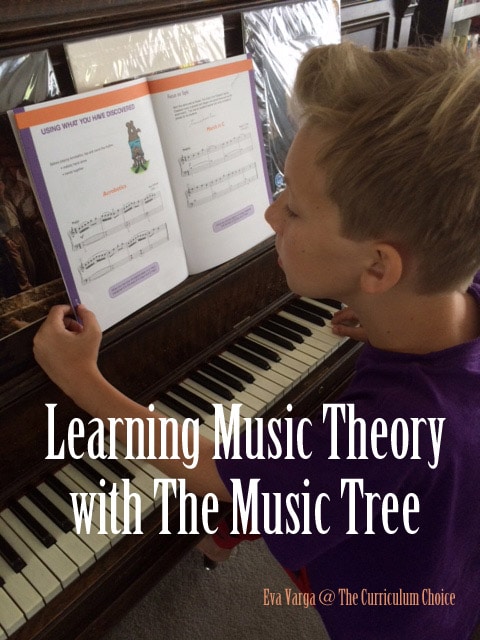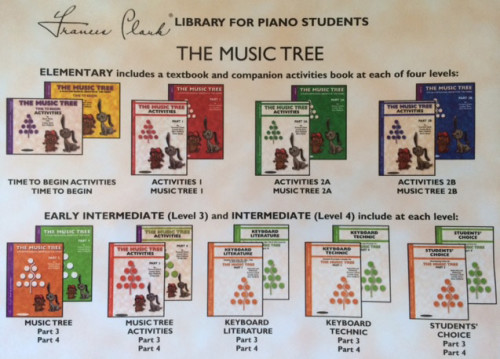When my son first began piano lessons at the age of four, his instructor utilized a variety of instructional materials. When we moved a couple years later, we began to seek out a new instructor. The question we would hear most often is,
With what method has he been learning?
I wasn’t able to answer this question – I really didn’t know. We soon settled upon an instructor that utilized both the Suzuki Method as well as The Music Tree, which utilizes an interval-based method.

is an innovative piano curriculum that teaches instinctive playing through interval familiarity. This means that students will recognize that they’re hearing, for example, the first and third notes of a major scale (scale degrees 1 and 3).
The beginning student will learn to recognize patterns and intervals and to naturally seek out the notes according to their visual distance rather than by naming lines and spaces. It gets at the core of fluent piano playing by teaching a new player to see and play shapes before grappling with the more confusing concept of EGBDF and FACE.
The beginning book introduces the appearance and feel of octaves right away, then builds visual and tactile recognition of smaller intervals throughout each unit. The Music Tree is a pedagogically sound course and is accompanied by a teacher’s handbook.
Without a formal pedagogy background, however, it is difficult to teach. It is recommended that instructors understand the “why” of what they are doing, not just the “how”.
One of the features I like best is that it focuses heavily on transposing, creativity with chord progressions, and fairly exhaustive skill building – one piece at a time. The creativity of the students is emphasized since they are given musical segments to rearrange, transpose, complete or to use as the basis for a new composition.
Though I play clarinet, I never learned these skills myself; nor am I a piano teacher. As an adult, I can see the ingenuity of the approach when compared with the other curricula with which I am familiar.
As my son had some instruction prior to his current teacher, his teacher assessed he was skilled enough to not need the primer (aimed at 5-7 year olds). He breezed through the first book and is presently working in Part 3. I can’t speak highly enough for the series, truly. It is well written, thorough, progressive, and the music pieces are interesting.


Eva, this sounds fascinating. If I understand correctly, you are not teaching this yourself, although you understand it because you play clarinet. I play organ but have not had such theory instruction. Do you think an untrained person could learn enough of this to teach her kids effectively? Or could older kids teach themselves? Or is an outside teacher needed?